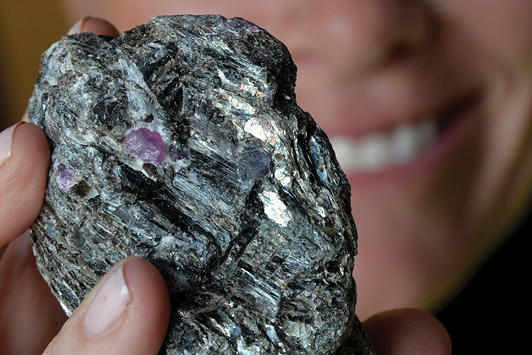
Colored gemstones have intrigued human beings for centuries, but it’s only recently that specific locations have become synonymous with the quality, color and value of gemstones. It’s also true that the nature of colored-gemstone mining has mostly been artisanal, and often questionable, which can explain in some ways the many issues that plague the industry in that regard.
To say the least, supply chains for responsibly sourced goods and a consistent flow of colored gemstones into the marketplace are enormously challenging, which might be reason enough for large-scale manufacturers to shy away. Given the growing concern of consumers about the transparency of the products they buy, and respect for human rights and the environment, it is our responsibility to ensure the survival of our industry with a move toward responsible and sustainable mining and manufacturing. This is no longer a choice, but needs to be a standard operating procedure. It is also our responsibility to assure our consumers that buying colored gemstones is okay to do — consumer confidence is at the core of our businesses. We must remove the mystery but keep the mystique.
So complex is the colored-gemstone supply chain model, the Responsible Jewellery Council (RJC) only recently incorporated this category into its Code of Practices, allowing colored-gemstone miners to become members for the first time in July 2019. Greenland Ruby was quick on the uptake, and third-party auditing is currently being undertaken, making the company the first colored-gemstone mining operation member and leading the way.
Sustainable mining
The 2017 opening of a ruby and pink-sapphire mine in a remote region of southwestern Greenland presented a truly unique opportunity to bring a new source of gemstones to the world, with human rights, labor protection, sustainable environmental mining, and product disclosure practices considered along every step of the way. The license to mine, market and sell these responsibly sourced icy treasures was issued by the government of Greenland via the Ministry of Natural Resources, to which Greenland Ruby reports regularly to ensure thorough monitoring of sustainability, social responsibility, and Greenland’s stunning nature.
The Greenland Ruby mine at Aappaluttoq is approximately 180 kilometers south of Nuuk. The name is taken from the Greenlandic word for “red,” and with good reason — this is where centuries ago, local herdsmen out with their reindeer discovered red crystals in the rock in the icy, mountainous landscape, which is surrounded by majestic fjords. Today, the active open pit is located in a drained waterway, which was dredged 10 meters to expose the ruby-bearing rock. Crushing and optical sorting is done at the nearby state-of-the art processing plant. Tailings (residual from crushed rock) are put back into the lake. Monthly water and biological samples are gathered and analyzed for heavy metal and trace elements, and when we finish our work here, the waterway will be refilled, all equipment and buildings will be removed, and the site will be fully restored to its natural wilderness.
Transparency and traceability
Next stop in the route to market is Thailand, where all gems are sent for treatment. Borax is an industry standard process by which fractures leading to the surface of the gem are healed, ensuring stability of our stones. This treatment is irreversible and enables us to responsibly and confidently cut, polish, sort and sell our gems with little or no risk of return. All gems are tracked along every step of this journey and come with a certificate of origin.
Our customized inventory system was created to meet the demands of consumers — who are increasingly interested in route-to-market transparency — and traces each gem from the mine through processing, cutting and sorting. The structure of our numbering system allows an individual gemstone’s story to be told from the moment it emerges from the mine until it reaches its destination in a piece of fine jewelry. All this is approved by the Greenlandic government.
Social responsibility
The PinkPolarBear Foundation is a Greenland Ruby initiative and was founded in 2019 by the company to support international research into the effects of climate change. Greenland Ruby gives a percentage of proceeds from the sale of each gem to the foundation, and encourages our partners to do the same.
Most of Greenland Ruby’s workforce is made up of Greenlandic people. More than a third of our employees are women. Mining is a newer industry in Greenland and represents a much-needed viable alternative to fishing, which, along with tourism, is regarded as Greenland’s most crucial future source of income. Our local workforces enjoy all the protections and working conditions guaranteed by Greenlandic law, which is modeled on strict northern European standards.
With today’s customers caring passionately about the planet and human rights, Greenland Ruby provides beautiful rubies and pink sapphires that meet and exceed socially conscious shoppers’ expectations.
Hayley A. Henning is the chief commercial officer at Greenland Ruby. greenlandruby.gl; pinkpolarbear.orgArticle from the Rapaport Magazine - August 2021. To subscribe click here.